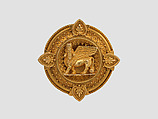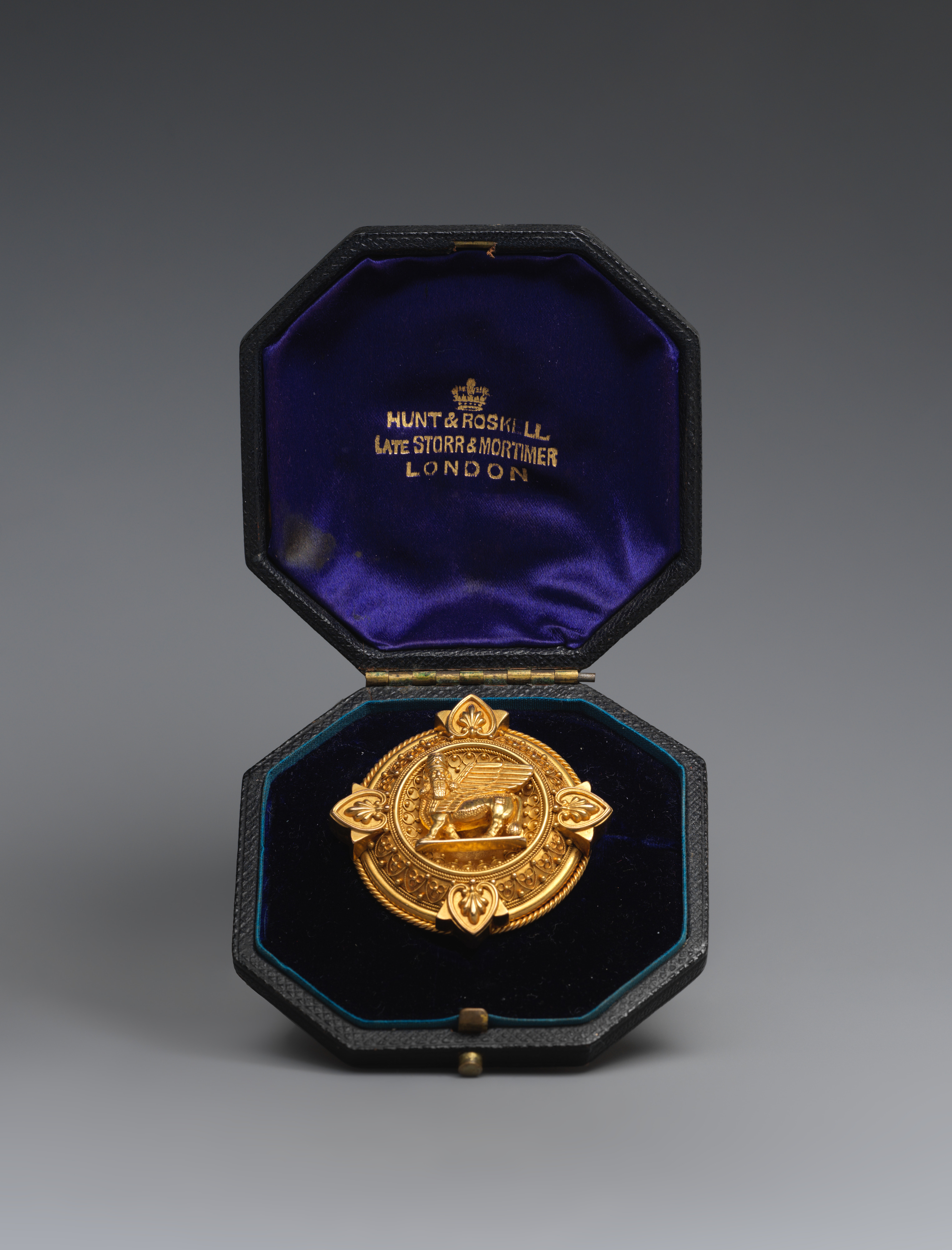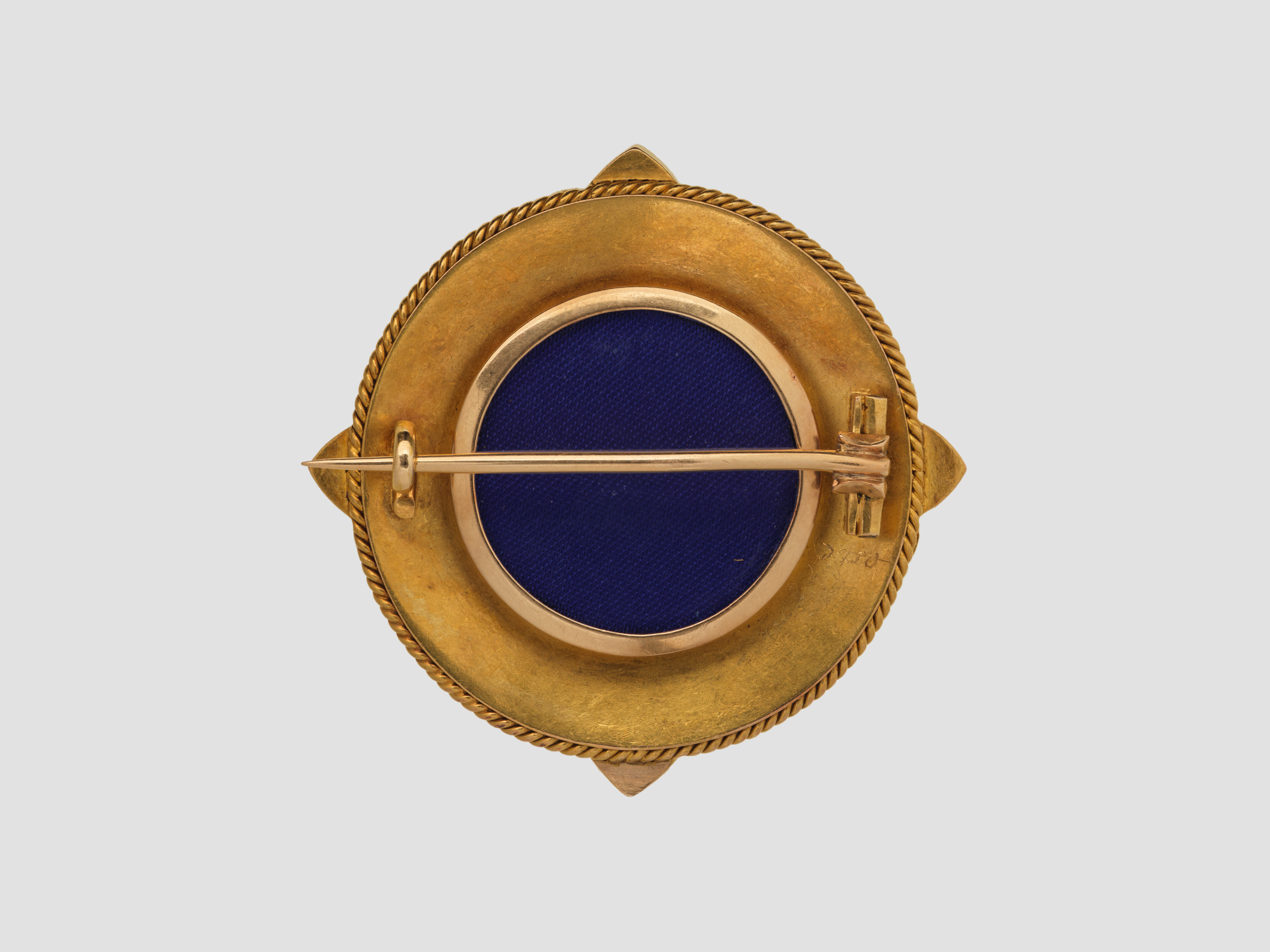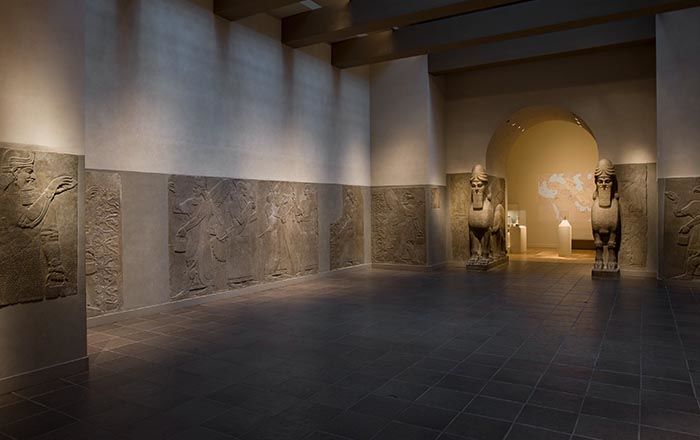Brooch with Assyrian human-headed winged bull
Not on view
Following the excavation of Assyrian palaces in the mid-nineteenth century, ancient Mesopotamian imagery began to be used in European decorative arts, including jewelry and ceramics. Publicity in the form of news coverage and popular books around the excavations, removal of many sculptures from sites in northern Iraq to England and France, and public spectacles such as the reconstructed ‘Nineveh Court’ in the Crystal Palace at Sydenham, London, fostered a fascination with Assyria and Assyrian art among the Victorian public.
Bond Street jeweler Edwin Streeter made and advertised a variety of jewelry based on ancient themes, including ‘Nineveh’ brooches and earrings, and supplied them to other jewelers. Streeter’s settings drew on classical and Etruscan sources to form a generic ‘ancient’ frame into which specific ancient designs, in this case an Assyrian winged bull, could be set. Hunt and Roskell were also makers of Assyrian revival jewelry and had exhibited Assyrian-inspired pieces at the 1851 Great Exhibition in London. The back of the brooch features a glass compartment for storing a picture or other keepsake.
This image cannot be enlarged, viewed at full screen, or downloaded.
This artwork is meant to be viewed from right to left. Scroll left to view more.




